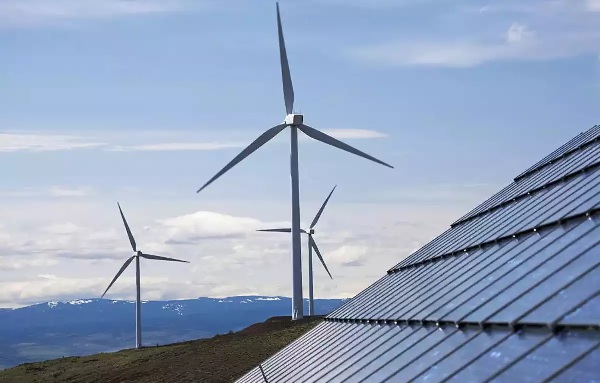
India’s Renewable Energy Sector Projected to Grow Twice as Fast as Overall Energy Growth by 2030: CRISIL – EQ
In Short : According to CRISIL, India’s renewable energy sector is set to grow at twice the rate of overall energy growth by 2030. This expansion reflects the country’s commitment to sustainable energy and reducing carbon emissions. The report indicates significant potential for investment and development in renewable technologies, positioning India as a leader in the global transition to clean energy.
In Detail : New Delhi – A report by CRISIL highlights that India’s renewable energy capacity is expected to grow at twice the rate of the country’s overall energy capacity growth. By fiscal 2030, India’s renewable energy capacity, excluding large hydro projects, is projected to reach between 360 and 370 GW.
The report estimates that this growth will occur at a compound annual growth rate (CAGR) of 16.5% to 17%. In contrast, the overall power capacity of the country is anticipated to grow by 7.5% to 8%, starting from an installed capacity of 442 GW as of March 2024.
As of the end of March 2024, the total installed power generation capacity in India stood at 442 GW, with renewable energy accounting for nearly 191 GW, which includes large hydroelectric projects. This indicates a significant share of the energy mix already coming from renewable sources.
The report emphasizes that the projected growth in renewable energy will be driven by several factors, including favorable government policies, competitive tariffs, and the development of solar parks and green energy corridors. These elements are crucial in fostering an environment conducive to renewable energy investments.
According to the report, India is expected to add approximately 175-180 GW of solar capacity between fiscal years 2025 and 2030. Solar energy has been a primary driver of this growth, with installed solar capacity reaching 82 GW by 2024, a substantial increase from just 0.9 GW in 2012.
The report also notes a significant surge in India’s peak electricity demand, which rose from 164 GW in fiscal 2018 to 243 GW in fiscal 2024. This reflects an average growth rate of 6.8%, indicating a strong demand for energy across various sectors.
Despite challenges in the generation sector that led to a peak deficit of 4.2% in fiscal 2023, the situation improved in fiscal 2024, reducing the deficit to just 1.4%. This improvement highlights the ongoing efforts to enhance the reliability of energy supply in the country.
Looking forward, the report anticipates that power demand will continue to grow by 5.5% to 6% over the next five years. This growth will be fueled by infrastructure investments, railway electrification, expanding metro rail projects, and the increasing adoption of electric vehicles.
However, advancements in energy efficiency and off-grid renewable generation are expected to moderate the growth in demand. These developments are significant as they position India as a key player in the global renewable energy transition.
In summary, the findings from CRISIL underscore India’s commitment to a sustainable and green energy future, aligning with its goals to expand renewable energy capacity and reduce carbon emissions in the coming years.










